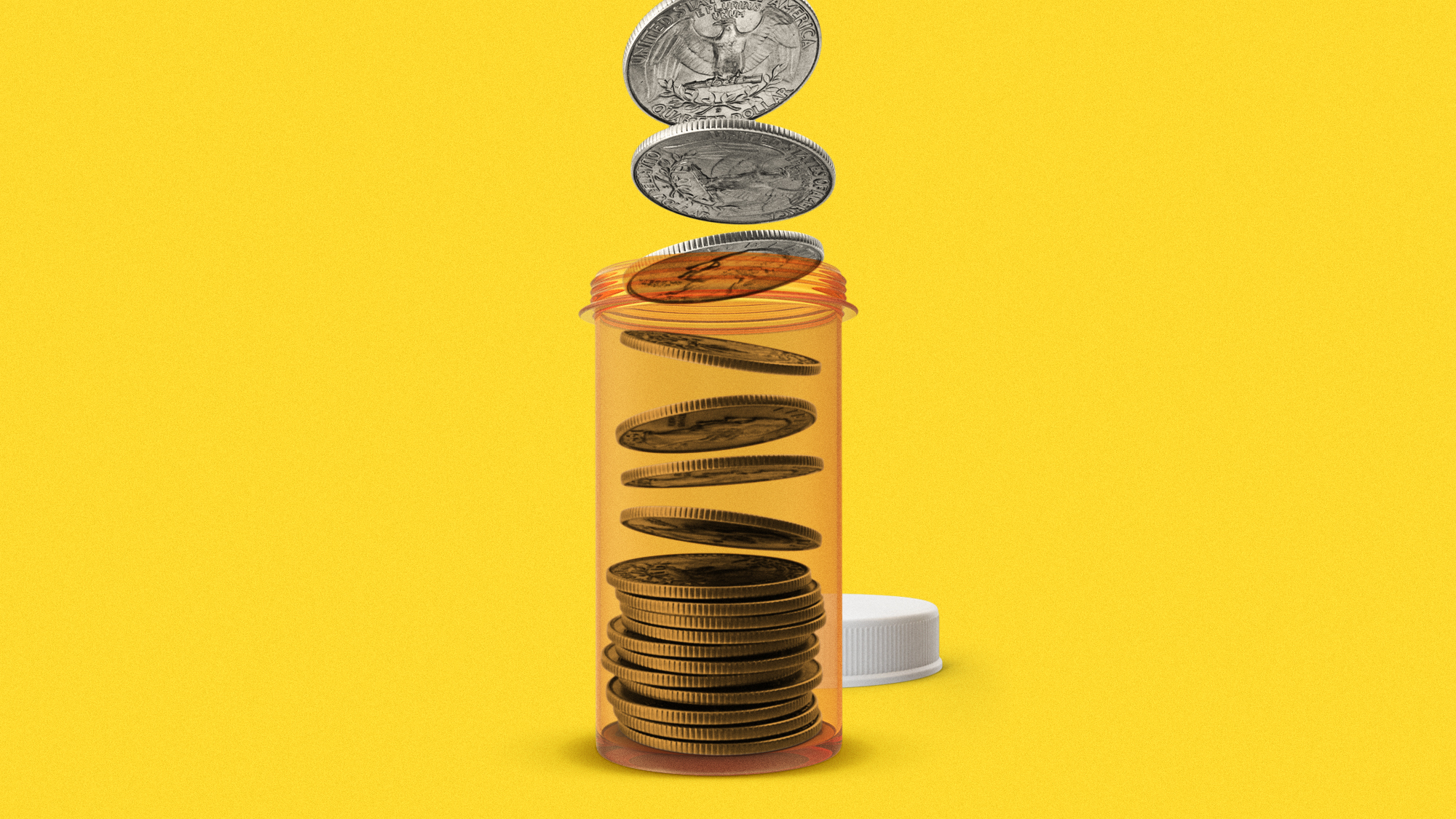Obesity drugs: Will Trump’s plan lower costs?
Even $149 a month, the advertised price for a starting dose of a still-in-development GLP-1 pill on TrumpRx, will be too big a burden for the many Americans ‘struggling to afford groceries’

President Trump wants to “make America slim again,” said Kara Kennedy in The Free Press. Standing beside drug execs in the Oval Office earlier this month, Trump announced deals with Eli Lilly and Novo Nordisk that will cut the price of their GLP-1 weight loss medicines, Zepbound and Wegovy, in return for a three-year exemption from his 100% pharmaceutical tariffs. Medicare recipients will pay a $50 monthly co-pay for the drugs, which will also be available on TrumpRx.gov—a government-run site—for $350 a month. That’s a steep discount on current list prices, which top $1,000, and will expand access to the “single most effective intervention we have against obesity,” a disease that kills up to 500,000 Americans and costs the U.S. health care system some $173 billion every year. With Trump, “it’s always hard to separate hype from substance,” said Larry Edelman in The Boston Globe, and wide coverage gaps remain. Medicare is barred from covering weight loss drugs, so patients must have a related health condition such as prediabetes or hypertension to be eligible. Still, Trump “deserves credit” for tackling the cost issue.
Lower GLP-1 prices “could benefit millions of Americans,” said The Washington Post in an editorial, but this is the wrong way to cut costs. Trump’s ultimate goal is to peg U.S. drug prices to “the lower levels seen in other developed countries.” That “might sound appealing,” except that if a government has a heavy hand in drug pricing and distribution, it can also ration who gets it. In the U.K.’s socialized system, for example, obesity meds cost under $200 a month—but “your BMI must hit 40, and you must have an additional four health conditions, to become eligible.” And it’s easy to imagine a future Democratic president using the TrumpRx precedent to force companies to adopt “their own ideological agenda.” That would be “a disaster for innovation and consumer choice.”
For Americans forced to pay out of pocket, “any price cut is welcome,” said Lisa Jarvis in Bloomberg. And getting Medicare to cover obesity drugs, even in a limited way, “is a positive step toward acknowledging and treating obesity as a disease,” not a lifestyle choice. But even $149 a month, the advertised price for a starting dose of a still-in-development GLP-1 pill on TrumpRx, will be too big a burden for the many Americans “struggling to afford groceries.” For now, it’s too early to tell whether this deal “will actually change people’s lives” or whether the balance of benefits will ultimately favor Big Pharma or patients and taxpayers.
The Week
Escape your echo chamber. Get the facts behind the news, plus analysis from multiple perspectives.

Sign up for The Week's Free Newsletters
From our morning news briefing to a weekly Good News Newsletter, get the best of The Week delivered directly to your inbox.
From our morning news briefing to a weekly Good News Newsletter, get the best of The Week delivered directly to your inbox.
A free daily email with the biggest news stories of the day – and the best features from TheWeek.com
-
 Political cartoons for December 6
Political cartoons for December 6Cartoons Saturday’s political cartoons include a pardon for Hernandez, word of the year, and more
-
 Pakistan: Trump’s ‘favourite field marshal’ takes charge
Pakistan: Trump’s ‘favourite field marshal’ takes chargeIn the Spotlight Asim Munir’s control over all three branches of Pakistan’s military gives him ‘sweeping powers’ – and almost unlimited freedom to use them
-
 Codeword: December 6, 2025
Codeword: December 6, 2025The daily codeword puzzle from The Week
-
 Stopping GLP-1s raises complicated questions for pregnancy
Stopping GLP-1s raises complicated questions for pregnancyThe Explainer Stopping the medication could be risky during pregnancy, but there is more to the story to be uncovered
-
 The stalled fight against HIV
The stalled fight against HIVThe Explainer Scientific advances offer hopes of a cure but ‘devastating’ foreign aid cuts leave countries battling Aids without funds
-
 Ultra-processed America
Ultra-processed AmericaFeature Highly processed foods make up most of our diet. Is that so bad?
-
 The quest to defy ageing
The quest to defy ageingThe Explainer Humanity has fantasised about finding the fountain of youth for millennia. How close are we now?
-
 Can TrumpRx really lower drug prices?
Can TrumpRx really lower drug prices?Today’s Big Question Pfizer’s deal with Trump sent drugmaker stocks higher
-
 Why are autism rates increasing?
Why are autism rates increasing?The Explainer Medical experts condemn Trump administration’s claim that paracetamol during pregnancy is linked to rising rates of neurodevelopmental disorder in US and UK
-
 The battle of the weight-loss drugs
The battle of the weight-loss drugsTalking Point Can Novo Nordisk and Eli Lilly regain their former stock market glory? A lot is riding on next year's pills
-
 An insatiable hunger for protein
An insatiable hunger for proteinFeature Americans can't get enough of the macronutrient. But how much do we really need?